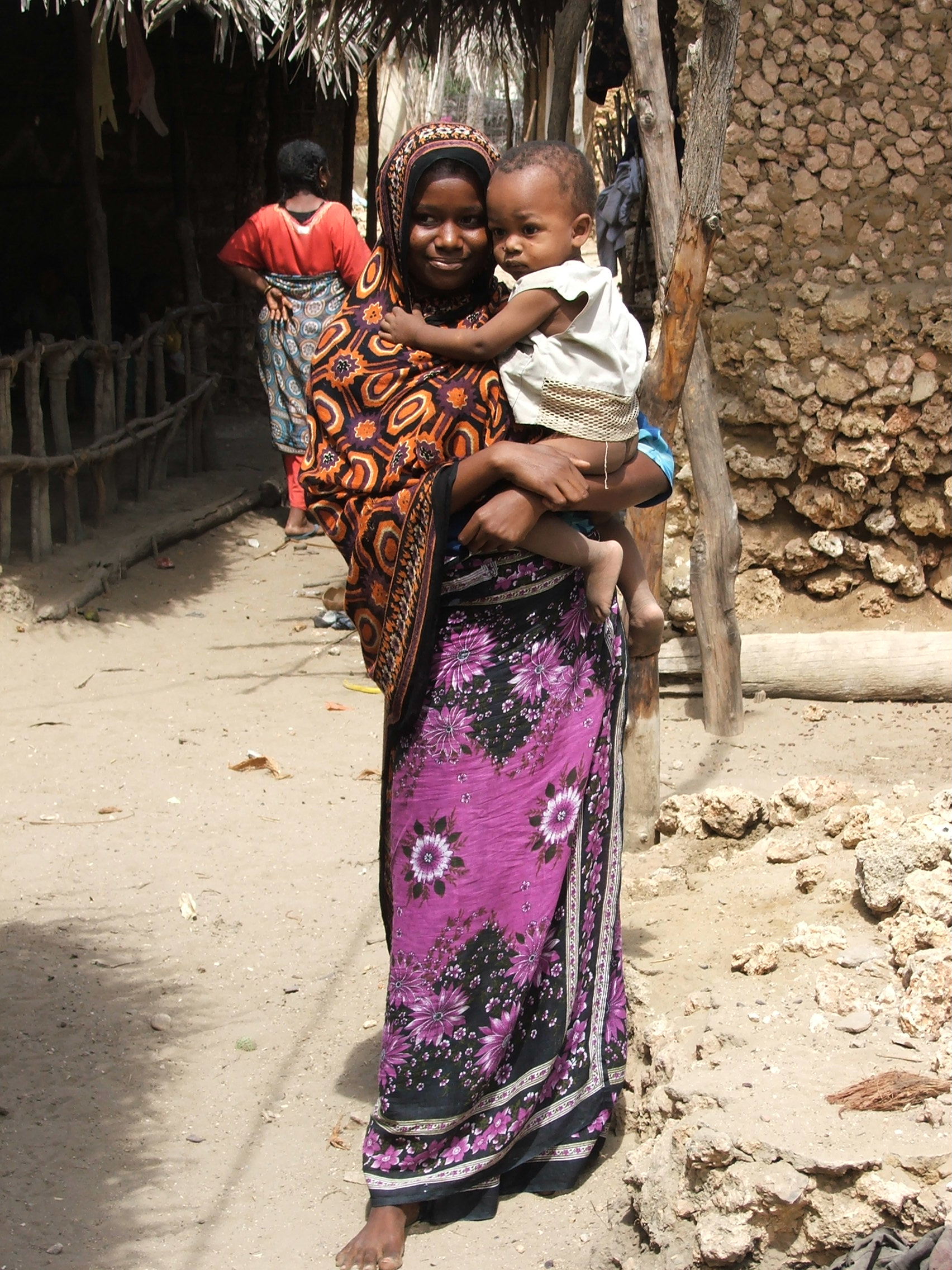|
Mitumba Clothing
Mitumba is a Swahili term, literally meaning "bundles", used to refer to plastic-wrapped packages of used clothing donated by people in wealthy countries. The term is also applied to the clothing that arrives in these bundles. One major receiving port for Mitumba is in the Tanzanian city of Dar es Salaam. From there the clothing is widely dispersed into the interior of Africa. The transportation and sale of Mitumba is responsible for many jobs both in wealthy donor companies and in the African countries where Mitumba is bought and sold. Critics of the Mitumba trade note that the influx of cheap clothing is responsible for the decline of local textile industries. Proponents of Mitumba point out that the clothing is beneficial in that it stimulates economic activity and allows people with limited means to afford fashionable clothing. Mitumba is usually packaged in plastic bundles prior to transport to Africa. Most of the Mitumba originates in developed countries such as the United St ... [...More Info...] [...Related Items...] OR: [Wikipedia] [Google] [Baidu] |
Swahili Language
Swahili, also known by its local name , is the native language of the Swahili people, who are found primarily in Tanzania, Kenya and Mozambique (along the East African coast and adjacent litoral islands). It is a Bantu language, though Swahili has borrowed a number of words from foreign languages, particularly Arabic, but also words from Portuguese, English and German. Around forty percent of Swahili vocabulary consists of Arabic loanwords, including the name of the language ( , a plural adjectival form of an Arabic word meaning 'of the coast'). The loanwords date from the era of contact between Arab slave traders and the Bantu inhabitants of the east coast of Africa, which was also the time period when Swahili emerged as a lingua franca in the region. The number of Swahili speakers, be they native or second-language speakers, is estimated to be approximately 200 million. Due to concerted efforts by the government of Tanzania, Swahili is one of three official languages (th ... [...More Info...] [...Related Items...] OR: [Wikipedia] [Google] [Baidu] |
Salaula
The Zambian term salaula means "to select from a pile in the manner of rummaging" or for short, "to pick". Some African nations such as Zambia have a vast internal consumer demand for second-hand clothes or hand-me-downs from rich nations in North America and Europe. The clothes arrive in these local markets in large bales or packages and are then cut open so buyers can sort through them and pick what article they like the most. The Salaula industry faces many criticisms. One is that it tends to disturb the internal textile industry. Local textile business cannot compete with cheap used clothes coming from abroad. Defendants of the industry argue that market demand should dictate what is fair or not. Another criticism is towards the profit companies are generating from these clothes since these clothes were originally donated to non-profit organizations such as Goodwill. Defendants of the practice argue that non-profit organization must sell these donations in order to acquire mo ... [...More Info...] [...Related Items...] OR: [Wikipedia] [Google] [Baidu] |
Swahili Words And Phrases
Swahili may refer to: * Swahili language, a Bantu language official in Kenya, Tanzania and Uganda and widely spoken in the African Great Lakes * Swahili people, an ethnic group in East Africa * Swahili culture Swahili culture is the culture of the Swahili people inhabiting the Swahili coast. This littoral area encompasses Tanzania, Kenya, and Mozambique, as well as the adjacent islands of Zanzibar and Comoros and some parts of Malawi. They speak Swah ..., the culture of the Swahili people * Swahili coast, a littoral region in East Africa Language and nationality disambiguation pages {{disambiguation ... [...More Info...] [...Related Items...] OR: [Wikipedia] [Google] [Baidu] |
Textile Industry
The textile industry is primarily concerned with the design, production and distribution of yarn, cloth and clothing. The raw material may be natural, or synthetic using products of the chemical industry. Industry process Cotton manufacturing Cotton is the world's most important natural fibre. In the year 2007, the global yield was 25 million tons from 35 million hectares cultivated in more than 50 countries. There are five stages of cotton manufacturing: * Cultivating and Harvesting * Preparatory Processes * Spinning — giving yarn * Weaving — giving fabrics * Finishing — giving textiles Synthetic fibres Artificial fibres can be made by extruding a polymer, through a spinneret (polymers) into a medium where it hardens. Wet spinning (rayon) uses a coagulating medium. In dry spinning (acetate and triacetate), the polymer is contained in a solvent that evaporates in the heated exit chamber. In melt spinning (nylons and polyesters) the extruded polymer is cooled in gas or ... [...More Info...] [...Related Items...] OR: [Wikipedia] [Google] [Baidu] |
African Clothing
African clothing is the traditional clothing worn by the peoples of Africa. African clothing and fashion is a diverse topic that is able to provide a look into different African cultures. Clothing varies from brightly colored textiles, to abstractly embroidered robes, to colorful beaded bracelets and necklaces. Since Africa is such a large and diverse continent, traditional clothing differs throughout each country. For example, many countries in West Africa have a "distinct regional dress styles that are the products of long-standing textile crafts in weaving, dyeing, and printing", but these traditions are still able to coexist with western styles. A large contrast in African fashion is between rural and urban societies. Urban societies typically are exposed more to trade and the changing world, while it takes more time for new western trends to get to rural areas. By region In Northeastern Africa, particularly in Egypt, styles of traditional women's clothing have been influe ... [...More Info...] [...Related Items...] OR: [Wikipedia] [Google] [Baidu] |
2010s In African Fashion
The 2010s were defined by Hipster (contemporary subculture), hipster fashion, athleisure, a revival of 1940s fashion, austerity-era period pieces and alternative fashions, swag-inspired outfits, 1980s in fashion, 1980s-style neon streetwear, and unisex 1990s in fashion, 1990s-style elements influenced by grunge and skater fashions. The later years of the decade witnessed the growing importance in the western world of social media influencers paid to promote fast fashion brands on Pinterest and Instagram. Popular global fashion brands of the decade included Abercrombie and Fitch, Adidas, Balenciaga, Ben Sherman, Burberry, Christian Dior, Coach New York, Coach, DSquared2, Dorothy Perkins, Fashion Nova, Forever 21, Gucci, H&M, Hollister Co., Hollister, Hugo Boss, Lacoste, Louis Vuitton, Marks and Spencer, Michael Kors (brand), Michael Kors, Monsoon Accessorize, Nike, Inc., Nike, Nine West, Off-White (company), Off-White, River Island, Supreme (clothing), Supreme, Topman, Topshop, U ... [...More Info...] [...Related Items...] OR: [Wikipedia] [Google] [Baidu] |



